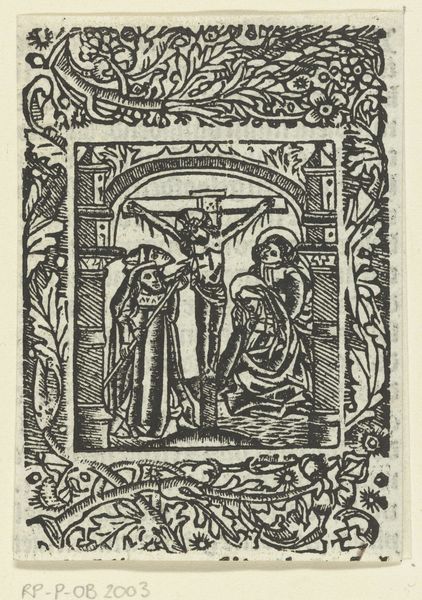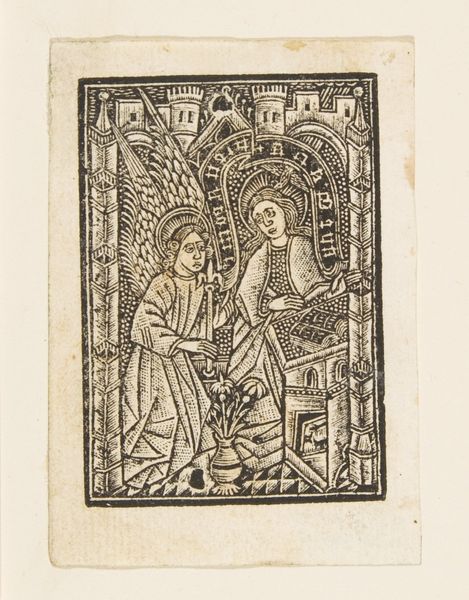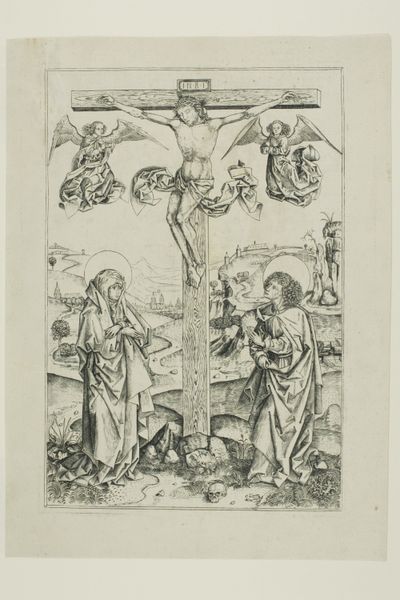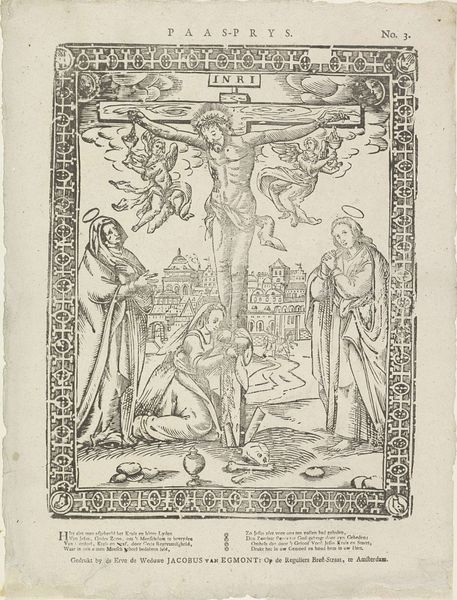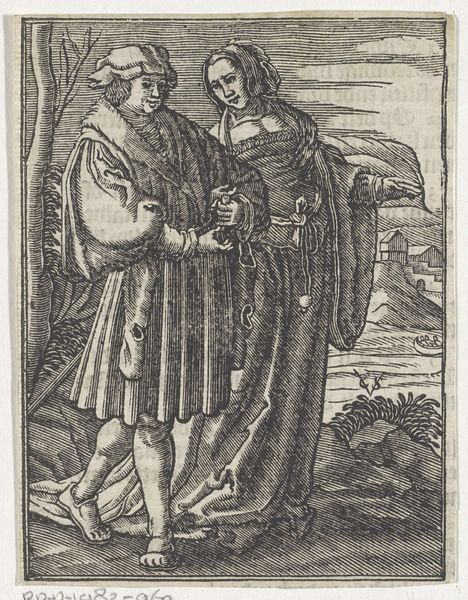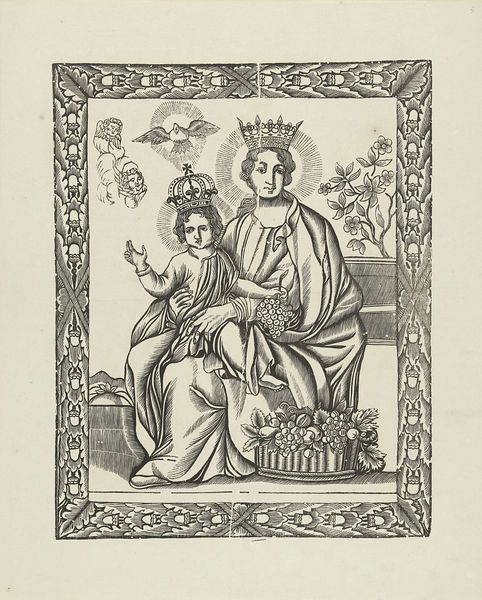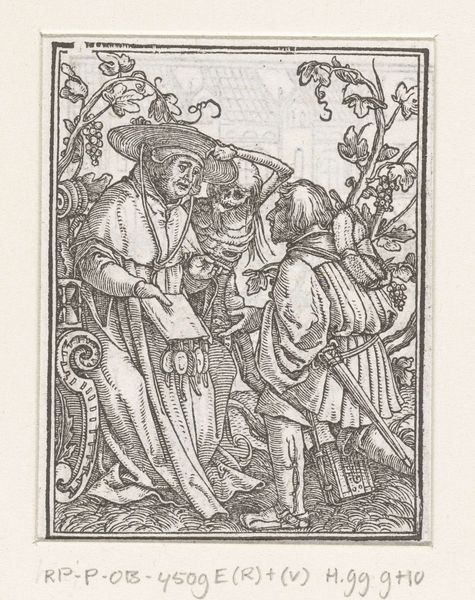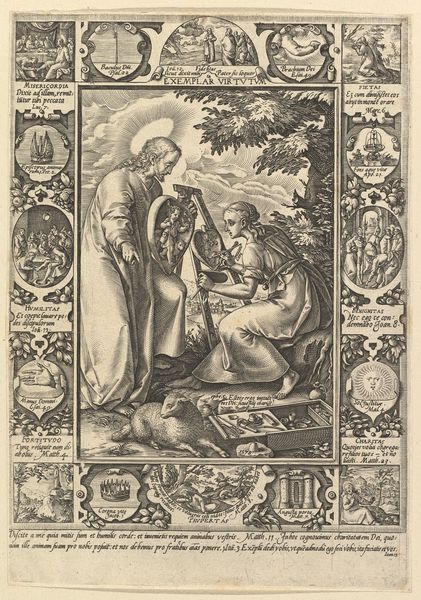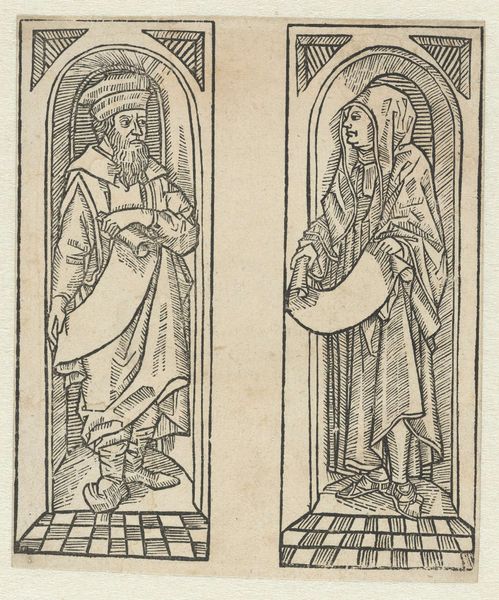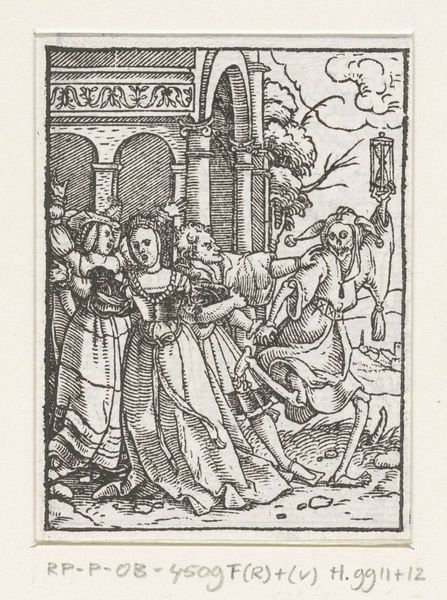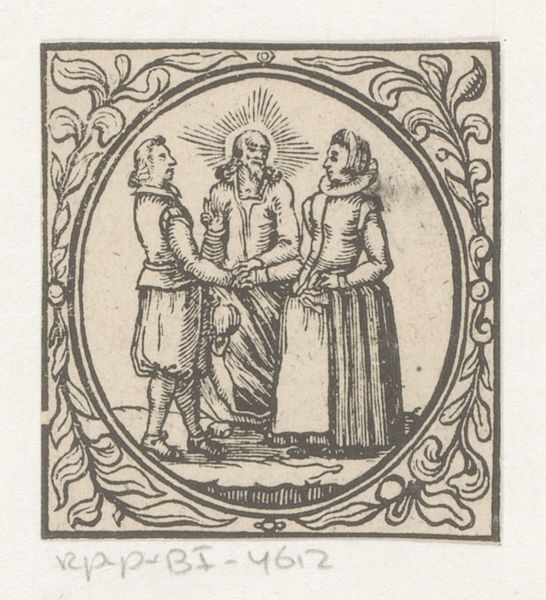
Dimensions: height 116 mm, width 85 mm
Copyright: Rijks Museum: Open Domain
Editor: This is a fascinating print called "Vanitas" by Monogrammist XXX met L, dating from around 1550 to 1570. It's an engraving, and the density of the ink lines creates a rather somber mood. There's so much detail crammed in – what do you see in this piece? Curator: It is fascinating. Let's consider the material conditions that give rise to such imagery. The dense lines you mentioned speak to the meticulous labor involved in creating this intaglio print. We need to think about the production of these materials—the inks derived from specific sources, the metal plate meticulously engraved, the paper sourced and treated. What does the availability and cost of these materials tell us about who commissioned and consumed such artworks? Editor: So, it's not just about the message, but about who had access to these materials and the skills to produce the print? Curator: Precisely. Think about the intended audience, a wealthy patron most likely. The "Vanitas" theme—the transience of earthly pleasures—becomes less a universal truth and more a pointed message about the dangers of excessive consumption and wealth in the face of death. We see a contrast between the ephemeral nature of the earthly possessions, against the permanence of the print medium. Editor: The artist uses durable material to point out that all the objects, riches, power, people in the portrait, are impermanent. And maybe prints are there to warn us! Curator: Exactly. Considering that each print could be copied, the message about earthly pleasure is amplified over time as more and more prints are being made. By focusing on the materiality of the artwork, we begin to reveal these prints as commodities of their time, a status object and conversation piece to remind us that pleasures come and go but good behavior can get us somewhere after we die. What did you think of this angle? Editor: That's really insightful. I was so focused on the symbolism, I didn’t think about how the actual materials played into the message about impermanence. Curator: Seeing the work through a materialist lens adds a richer layer to the art and also sheds some light on its value as well!
Comments
No comments
Be the first to comment and join the conversation on the ultimate creative platform.
